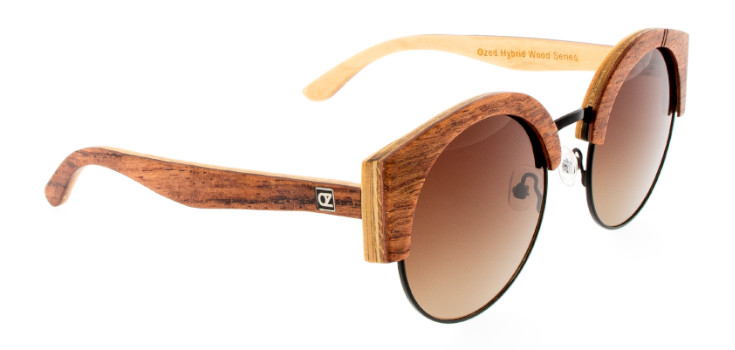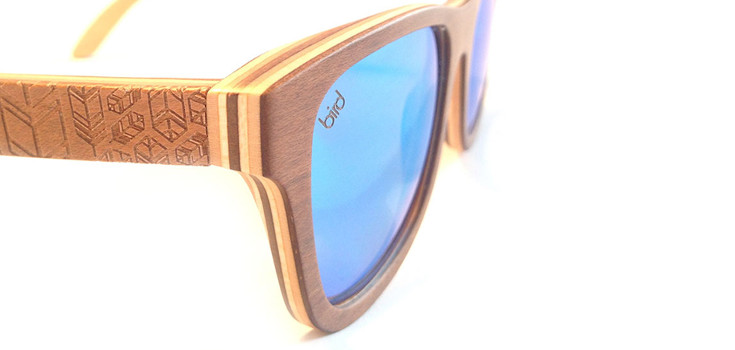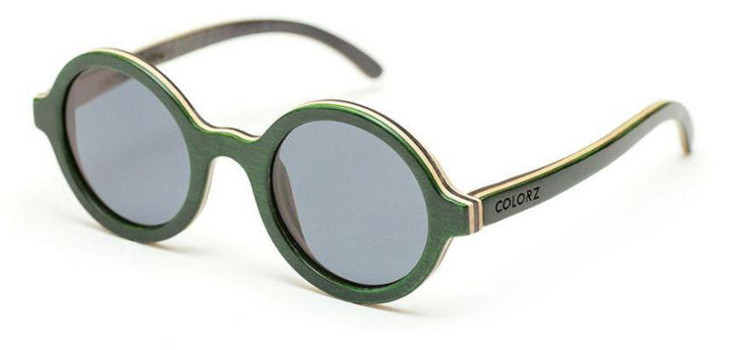Laminated and glued Glasses
The most common technique among wooden glasses designers is the use of lamination and gluing, also called plating. It consists of cutting thin strips of wood, sticking them together, and compressing them. All layers fall in the same direction, unlike plywood. Very fine, they bring suppleness and lightness to the frames, without sacrificing the solidity of wood.
Several different woods, most of them softwoods, are generally used for laminates. This provides a varied look and guaranteed results! It is this process that makes wooden glasses so recognizable, with the superimposition of the different layers that are visible on the edge of the frames.
Rezin Wood, which started out with solid wood glasses, quickly turned to lamination and glue for more finesse. She started with eight sheets of wood and, over time, refined her technique to make her frames even stronger; she now compresses together up to thirteen layers.
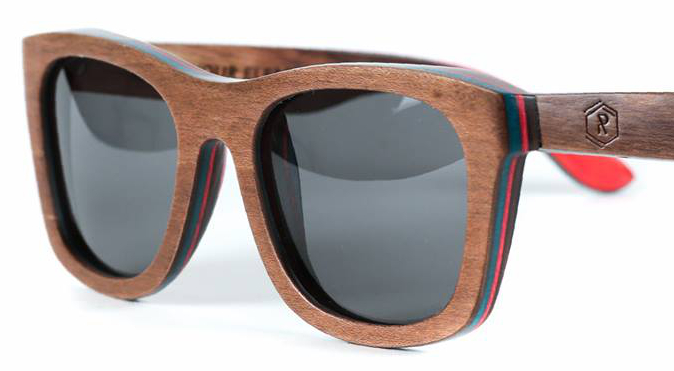 © Rezin Wood
© Rezin Wood
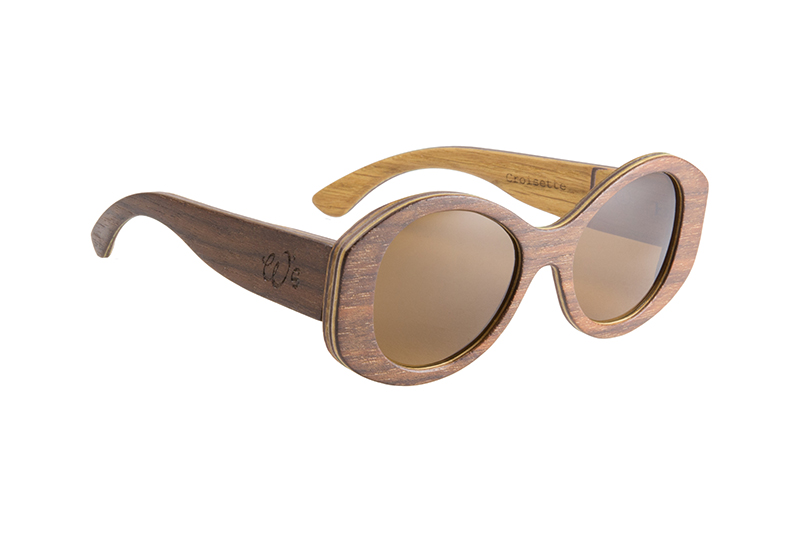
© WoodLun’s – Croisette frame
WoodLun’s has always favored glued, laminated wood for its wooden glasses. The brand alternates slats of ash, beech, oak and chestnut in the structure of its frames. WoodLun’s uses a 70% natural glue to stay as green as possible, and applies a layer of beeswax and vegetable oil to protect the wood from the vagaries of weather.
Sturdy yet finely made, glued-laminated glassescombine the charm of a beautiful material, the aesthetic of stacked layers, and the trustworthiness of high quality.

